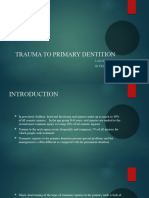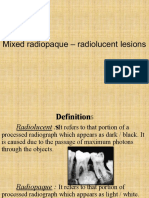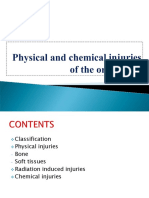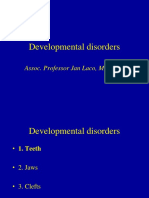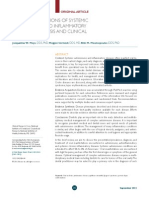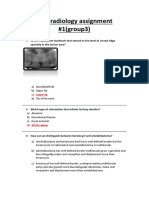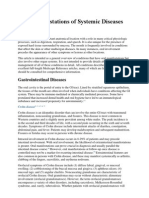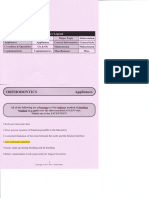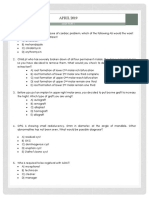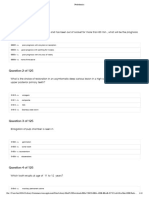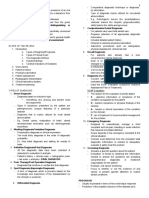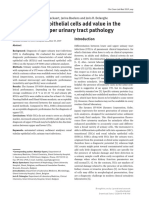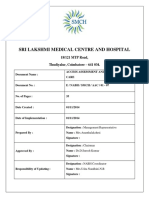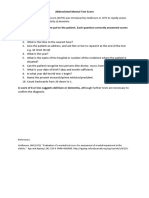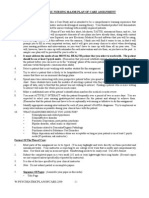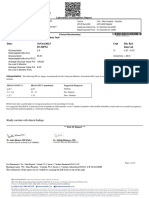100% found this document useful (2 votes)
256 views3 pages1oral Diagnosis
Oral diagnosis is the process of identifying oral diseases through scientific knowledge. There are several types of oral diagnoses:
1) Comprehensive oral diagnosis involves evaluating all dental problems through a case history, clinical examination, and special investigations to create a treatment plan.
2) Emergency diagnosis provides immediate attention to urgent issues like dental pain through a limited examination.
3) Spot diagnosis rapidly identifies simple issues based on minimal information.
4) Differential diagnosis develops a list of possible diseases with similar symptoms to determine the most likely one.
An accurate definitive diagnosis is reached by evaluating all available information, including symptoms, signs, diagnostic aids, and ruling out other potential diagnoses.
Uploaded by
ابو العزCopyright
© © All Rights Reserved
We take content rights seriously. If you suspect this is your content, claim it here.
Available Formats
Download as PDF, TXT or read online on Scribd
100% found this document useful (2 votes)
256 views3 pages1oral Diagnosis
Oral diagnosis is the process of identifying oral diseases through scientific knowledge. There are several types of oral diagnoses:
1) Comprehensive oral diagnosis involves evaluating all dental problems through a case history, clinical examination, and special investigations to create a treatment plan.
2) Emergency diagnosis provides immediate attention to urgent issues like dental pain through a limited examination.
3) Spot diagnosis rapidly identifies simple issues based on minimal information.
4) Differential diagnosis develops a list of possible diseases with similar symptoms to determine the most likely one.
An accurate definitive diagnosis is reached by evaluating all available information, including symptoms, signs, diagnostic aids, and ruling out other potential diagnoses.
Uploaded by
ابو العزCopyright
© © All Rights Reserved
We take content rights seriously. If you suspect this is your content, claim it here.
Available Formats
Download as PDF, TXT or read online on Scribd
/ 3























